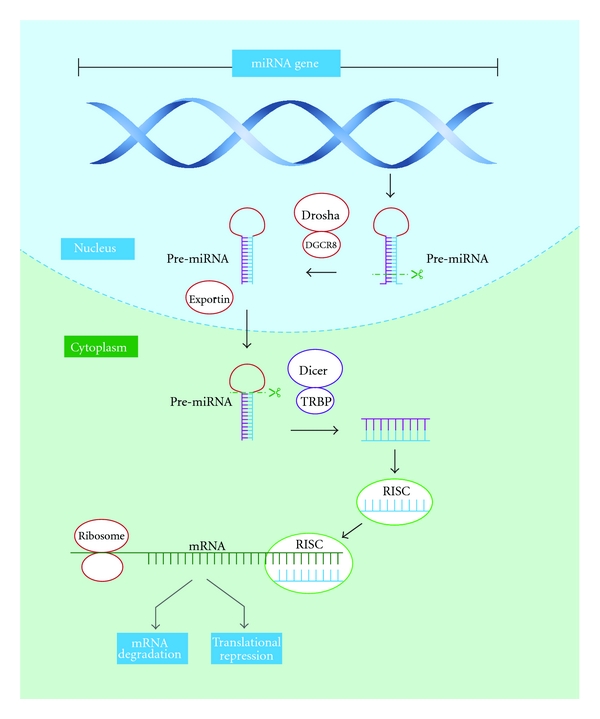Figure 5.

miRNA biogenesis. miRNA genes are transcribed by RNA Polymerase II in the nucleus to form a primary miRNA (pri-miRNA) that is, 100 to 1000 nucleotides in length. This pri-miRNA is recognized by nuclear enzymes Drosha, Pasha, or DGCR8 (in humans), which cleave about 11 nucleotides off of it to produce hairpin structures known as pre-miRNA, which are ~70 nucleotides in length. Once pre-miRNA hairpins are made, they are exported from the nucleus to the cytoplasm by the Exportin-5 enzyme. In the cytoplasm, the Dicer enzyme cleaves pre-miRNAs to form a duplex miRNA that is 18–23 nucleotides in length. Of these 2 strands, the one with lower stability in the 5′ end is the guide strand, and it will be associated with the RNA-induced silencing complex (RISC), where miRNAs interact with the mRNA targets. The RISC complex needs to interact with other proteins such as Argonaute (Ago) proteins and TRBP to function appropriately. The translational repression and target degradation of mRNAs can be achieved by the level of complementarity between miRNAs strand and the site in the 3′ UTR targets. If there is a complete complementation, there will be a cleavage of the mRNAs and it will produce the degradation. On the other hand, if there is an incomplete complementation, translation will be repressed by taking the transcripts into P bodies to keep them silenced.
